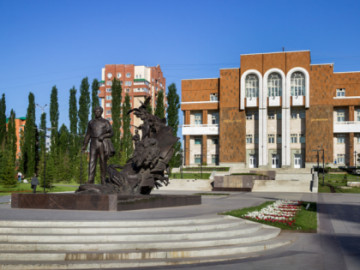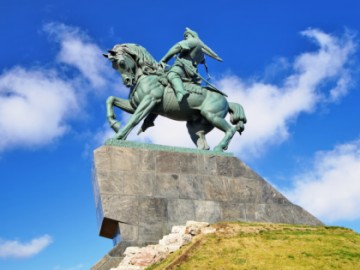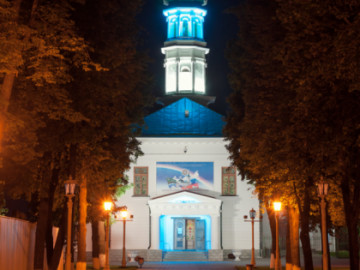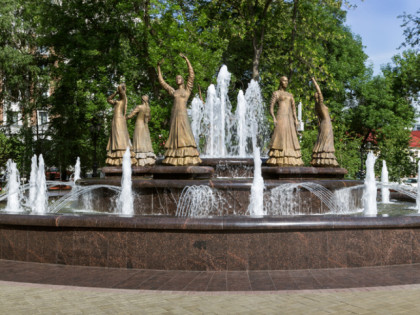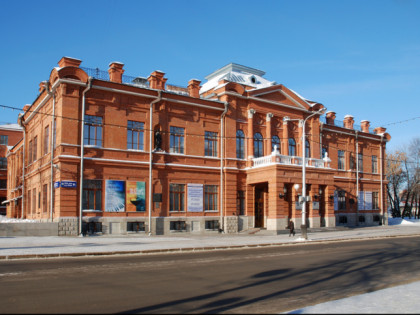Bashkir State Opera and Ballet Theatre and Fountain of Seven Girls
The building of the Bashkir State Opera and Ballet Theatre recalls the dual nature of the Bashkir culture, the inextricable link between European and Eastern cultures. The building was built in the early twentieth century and represents a mixture of Russian classicism and Muslim architecture with narrow slots of windows and graceful balconies.
The Aksakovsky People's House, Bashneft, a hospital, the Council of Trade Unions and others were functioning in the building of Bashkir State Opera and Ballet at different periods of time. Only in the late 30s of the XX century the reconstructed monument of architecture was again turned into the theatre. Already in 1940 the first national Bashkir opera "Hakmar" by composer Masalim Valeev was performed here. After the beginning of the Great Patriotic War the Kiev Opera and Ballet Theatre was evacuated to Ufa and the Bashkir theatrical school got a boost to new development. The famous Rudolf Nureyev used to perform on this stage. Now here along with the classic "The Nutcracker" and "Swan Lake", national Bashkir performances "Kakhym-tur", "Arkaim" and others are performed.
A musical monument-fountain with beautiful illumination and a romantic name Seven Girls is located not far from the Bashkir State Opera and Ballet Theatre. This is the biggest fountain in Ufa. The idea for the creators of the fountain was suggested by the Bashkir folk legend about the seven sisters - Ete kyz. High streams with illumination symbolize seven captives, and a round bowl - Lake Kultuban where the unfortunate girls escaped from their pursuers.



